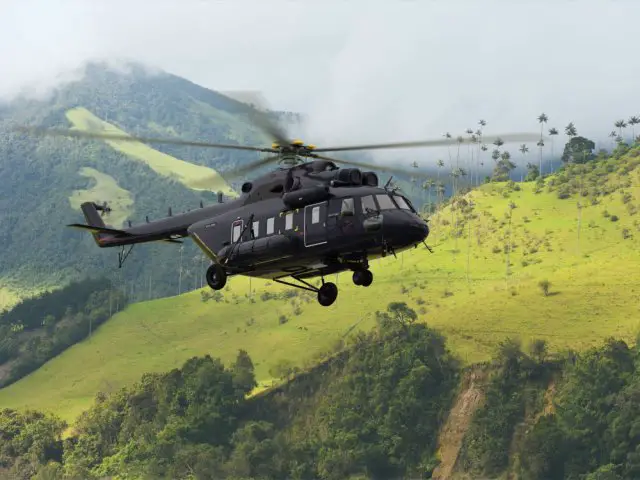Breaking news
Russian Helicopters' Mi-171A2 helicopter to undergo certification phase in early 2017.
| 2016
| a | |||
|
|
|||
|
World Aviation Defense & Security Industry News - Russian Helicopters
|
|||
|
|
|||
|
Russian Helicopters' Mi-171A2 helicopter to undergo certification phase in early 2017
|
|||
|
The Russian-made Mil Mi-171A2 medium-class multipurpose helicopter is expected to undergo certification in the first quarter of 2017, Russian Helicopters Group’s press office said on Tuesday. "Another stage of the certification trials will start in June-July 2016 to complete the whole range of planned certification works," the press office said.
|
|||
|
|
|||
 Russian Helicopters' Mi-171A2 medium-lift helicopter prototype Russian Helicopters' Mi-171A2 medium-lift helicopter prototype(Credit: Russian Helicopters) |
|||
|
|
|||
|
"Russian Helicopters Group is planning to certify the Mi-171A2 medium-class multipurpose helicopter in the first quarter of 2017," the press office added.
According to the press office, two prototype Mi-171A2 helicopters are taking part in the certification trials. The first Mi-171A2 helicopter performed its debut flight in November 2014 and the second chopper took to the skies in October 2015. Trials with the use of a flying laboratory developed on the basis of the serial Mi-8/17 helicopter were held simultaneously. The third and the fourth Mi-171A2 helicopter prototypes did not undergo trials as they are bench-scale models. The fifth Mi-171A2 helicopter prototype has already been dispatched to the Mil Moscow Helicopter Plant. The Mi-171A2 helicopter is the advanced rotorcraft in the Mi-8/17 (NATO reporting name: Hip) family. The helicopter is equipped with an integrated digital attitude and heading reference system of the KBO-17 avionics suite. The KBO-17 avionics suite has a glass cockpit design to allow operating the helicopter without an engineer onboard. Thus, the helicopter’s crew may be reduced to two. The Mi-171A2 helicopter has the main and the X-type anti-torque rotors made of composite materials, as well as an improved swashplate and a hub. The upgrade has allowed increasing the helicopter’s controllability, reducing the weight of its rotor system and enhancing the main rotor thrust by 700 kilograms. |
|||
|
|
|||
|
© Copyright 2015 TASS. All rights reserved. This material may not be published, broadcast, rewritten or redistributed.
|
|||
,



















